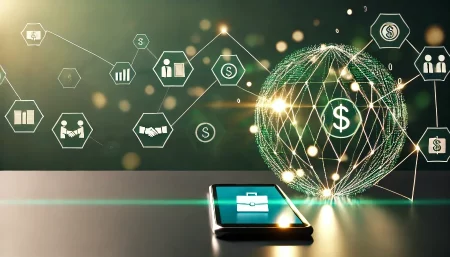Since the Indian economy opened itself up to the international market in the 1990s, we have witnessed massive changes to the banking landscape. It was a period of liberalisation as the Indian banking sector became more receptive to private and international banks. This was a key driver of the technological changes that have occurred since.
Technological Changes
Naturally, as innovative technology becomes more widely available, the consumer has a greater choice in how they conduct their day-to-day business. The fundamental activity, of course, is banking operations.
The Indian banking system began to adopt electronic tools in the 1980s. At that time, the technology was primarily used by the banks themselves for operations such as accounting. However, it’s only since the 1990s that the banking sector and the government have been promoting digital banking to consumers.
We’re going to look at some examples of banking technology and the difference it makes to how people handle their money.
Immediate Payment Services (IPS)
There are two main IPSs used within the Indian banking industry.
- UPI (Unified Payments Interface)
UPI is a facility that was revolutionary when it was launched in 2016. It’s a mobile only platform that enables transactions between banks,customers and merchants. Payments are instant and executed in real-time. It’s regulated by the Reserve Bank of India.
- National Electronic Funds Transfer (NEFT)
NEFT is a hybrid system of transferring funds between any two NEFT-enabled bank accounts. The two main differences between NEFT and UPI are the requirement for customers to complete an application form and the fact that transactions are not carried out in real-time. Instead, they are carried out in batches every half hour every day, including holidays.
- Payments Banks
Launched by the Indian government in 2015, payments banks provide a new model for consumers to manage their money. Payment banks can operate current and savings accounts, supply online banking, and issue ATM cards and debit cards. However, they are not licensed to issue loans or credit cards.
Digital Banking Habits in India
Between December 2018 and January 2019, the Reserve Bank of India (RBI) conducted a survey across six major cities: Delhi, Mumbai, Kolkata, Chennai, Bengaluru and Guwahati.
The survey focused on the awareness and usage of digital payment methods. It studied factors such as gender, level of education, the payment methods that the respondents were aware of and which ones they used.
Awareness
First let’s look at a few of the factors that impact awareness.
Gender
The RBI study found that males and females were equally aware of digital payment systems. On average, 96% of either gender was aware of digital payment solutions that were available.
Education
Respondents who had only been educated up to fifth grade had the lowest level of awareness at 85.3%. There was a steady increase in awareness that corresponded with higher levels of education.
The level of awareness between respondents educated up to tenth grade and those at postgraduate or higher level, only had a difference of 7%. The former group displayed awareness of 92.6% while the latter sat at 99.6%.
However, it’s extremely important to note that the survey was carried out across six cities with a combined average literacy rate of 90%. By contrast, the 2021 Census of India revealed that the average national literacy rate is just 74.04%. It’s likely that awareness of electronic payment systems is, on average, significantly lower than the figures presented by the RBI study.
Occupation
Across the six occupation groups that were considered for the RBI survey, awareness of digital payment methods was highest among students, at 98.1%. Given that generally, younger people engage more readily with innovative technology, this is not unsurprising.
As a general observation, it’s noteworthy that the next two highest levels of awareness were among salaried and self-employed respondents. One could surmise that this may be due to those groups of people having regular cash flow. The lowest levels of awareness were among retired people (90.5%) and workers on a daily wage regime(89.6%). These two groups could be expected to be less financially secure and less likely to be interested in digital payment methods.
Digital Payment Methods
In relation to respondents’ awareness of the digital payment methods available to them, the three highest profile options were debit/credit card (93.6%), desktop banking (72.7%) and mobile banking (72.3%). This was reflected in the preferred payment methods indicated by the respondents.
When questioned on their preferred method of receiving money, just over half of those questioned said that they preferred cash over digital .
It’s also interesting to note that participants in the survey were more likely to use digital payment methods for amounts that were above ₹500. Below that level, paying in cash was the overwhelming preference.
Conclusions
Despite the huge advances in technology in the last few decades, there are several factors that will force the adoption of digital banking to evolve gradually. The key factors in this include the availability and quality of internet services across our huge country, literacy levels and personal economic circumstances.
However, that said, the clear efforts by the Indian government to continue modernising our banking system appear to be working according to the results of the RBI study.











